Last updated: October 7, 2021
Article
Lafayette and Gallatin: A Friendship Forged in the Fight for American Success
Filled with the spirit of reason, liberty and progress brought on by the Age of Enlightenment, two young men set off for America in the late 1770s. Unbeknownst to them, their European upbringings would serve them well in the new world, setting them up for a future–– and a close friendship–– which would change the course of American history.
Though Albert Gallatin and the Marquis de Lafayette departed for America separately and three years apart, their trajectories showed a striking resemblance as they left Europe at young ages to pursue success in the newly-independent United States. Their friendship, which began in the height of the War of 1812, culminated in 1825 when Lafayette’s farewell tour in America brought him to Gallatin’s home on the rolling hills of Fayette County, Pennsylvania. Initially considered French-speaking outsiders upon entrance to American society, these two men dedicated their lives to the success of democracy domestically and abroad, ultimately securing themselves a place among the most influential leaders in United States’ history.
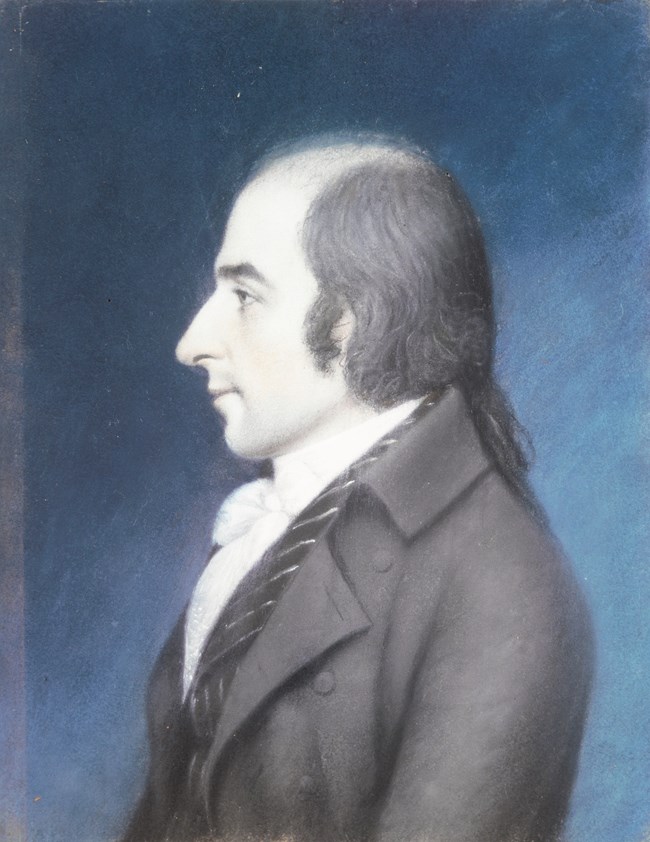
Painted by James Sharples
Upbringings in Europe
Although he was orphaned at just nine years old, Albert Gallatin received an excellent Swiss education under the care of his distant cousin, Mademoiselle Pictet. Gallatin came from a noble family whose aristocratic status can be dated as far back as 1258 AD in Northern Italy. After the year 1520, there was always a Gallatin living in Geneva. Breaking from tradition, Albert had no desire to take a profession as a lieutenant colonel pledged to serve a European prince, the position expected of his social status and education: Enlightenment philosopher and family friend Voltaire even joked that the Gallatins had been getting themselves killed in the service of the French since the time of King Henry IV. Equally uninterested in attending law school, specializing in theology, or going into his grandfather’s watchmaking business, young Albert was forced to consider his options. Enamored with the writings of Rousseau on individual rights, justice, and especially on man in his most uncorrupted state among nature, Gallatin pursued emigration to America with hopes to create his own path.
Early Start in America
After his arrival in 1780, Gallatin struggled to secure a steady income before finally taking a position as an interpreter and business partner of a French land speculator. His new position required frequent travel to undeveloped Western lands and, a true Rousseauian man, Gallatin soon fell in love with the open frontiers. In 1785, he officially pledged himself as an American citizen in Virginia and purchased a 400-acre plot of land in Fayette County, Pennsylvania. It was on this land where the Swiss emigrant built a two-story home made of brick and timber, calling his new home “Friendship Hill.” Settling into American life and interested in the politics and operations of the young nation, it did not take long for Gallatin to make an early name for himself. At age 24, he was elected as a delegate to the 1788 State Convention and won an election to the Pennsylvania house of Representatives in 1790. No doubt aided by his Swiss pragmatism, Gallatin’s service on the Ways and Means committee earned him an impeccable reputation in finance and taxation. In February of 1793, the Pennsylvania State Legislature recognized Gallatin’s dedication and elected him to the United States Senate. The Swiss-born Senator had no issue openly challenging and criticizing Alexander Hamilton’s economic program, earning him the favor of Democratic-Republicans like Thomas Jefferson and James Madison. Gallatin soon found himself appointed as the Secretary of Treasury under the Jefferson administration, the President himself claiming that Gallatin was the “only man in the U.S. who understands… the precise state of the Treasury.” In his new position, Gallatin imposed sweeping measures to organize the Treasury and made significant cuts to the national debt, all while financing the Louisiana Purchase (1803), the Lewis and Clark Expedition (1803-1806), and internal improvements such as canals and the National Road (1811).

Painted by Joseph-Desire Court, 1834
Like Gallatin, the Marquis de Lafayette did not take long to establish a name for himself in America. Offering to serve the American army without pay, Congress commissioned Lafayette a Major General within only four months of his arrival from France. Lafayette created a reputation for himself as a brave and calculated soldier in several early battles. Well-versed in European fighting styles, General Lafayette utilized the tactics he was taught as a young French Officer and adapted them into clever guerrilla maneuvers that worked well on the forested American landscape. The Marquis immediately won the admiration of George Washington for not only his charisma, but also for his humility. Lafayette had come to America to “learn,” he explained to Washington, “not to teach,” as was the mindset of other emigrated Europeans with whom Washington had met before encountering Lafayette. Washington was fond of Lafayette’s ambition and bravery in battles against the British, and soon the relationship between the two men grew to that of a father and son. After Lafayette was wounded in a skirmish near Delaware’s Brandywine Creek, Washington sent his own surgeon to care for him and asked the doctors to treat Lafayette “as if he were my son.”
In the midst of the Revolutionary War in 1779, General Lafayette returned home to spend time with his wife and family. While there, the Marquis successfully procured further support from France, securing 6,000 soldiers to be sent to America. His charm easily–– and notoriously–– won support from the King, the Count de Maurepas joking in one occurance to the royal council that “it is fortunate for the King that Lafayette does not take it into his head to strip Versailles of its furniture to send to his dear Americans; as his Majesty would be unable to refuse it.”
Lafayette received a warm reception back to America in April of 1780, especially given the recent string of military defeats which had disheartened the militiamen fighting. Upon his return, the Marquis continued to work tirelessly to procure more French aid, which would play a crucial role in battles to come. On September 28, 1781, the French fleet successfully blockaded the British in Chesapeake Bay, and American forces led by Washington and Lafayette laid siege to Yorktown. The last major battle of the American Revolution, British surrender at Yorktown signaled the beginning of Lafayette’s next chapter in France. Welcomed as a hero at the Palace of Versailles in January 1782, the Marquis put his efforts towards securing peace between American and British forces and helped negotiate the Treaty of Paris, signed September 3, 1783.
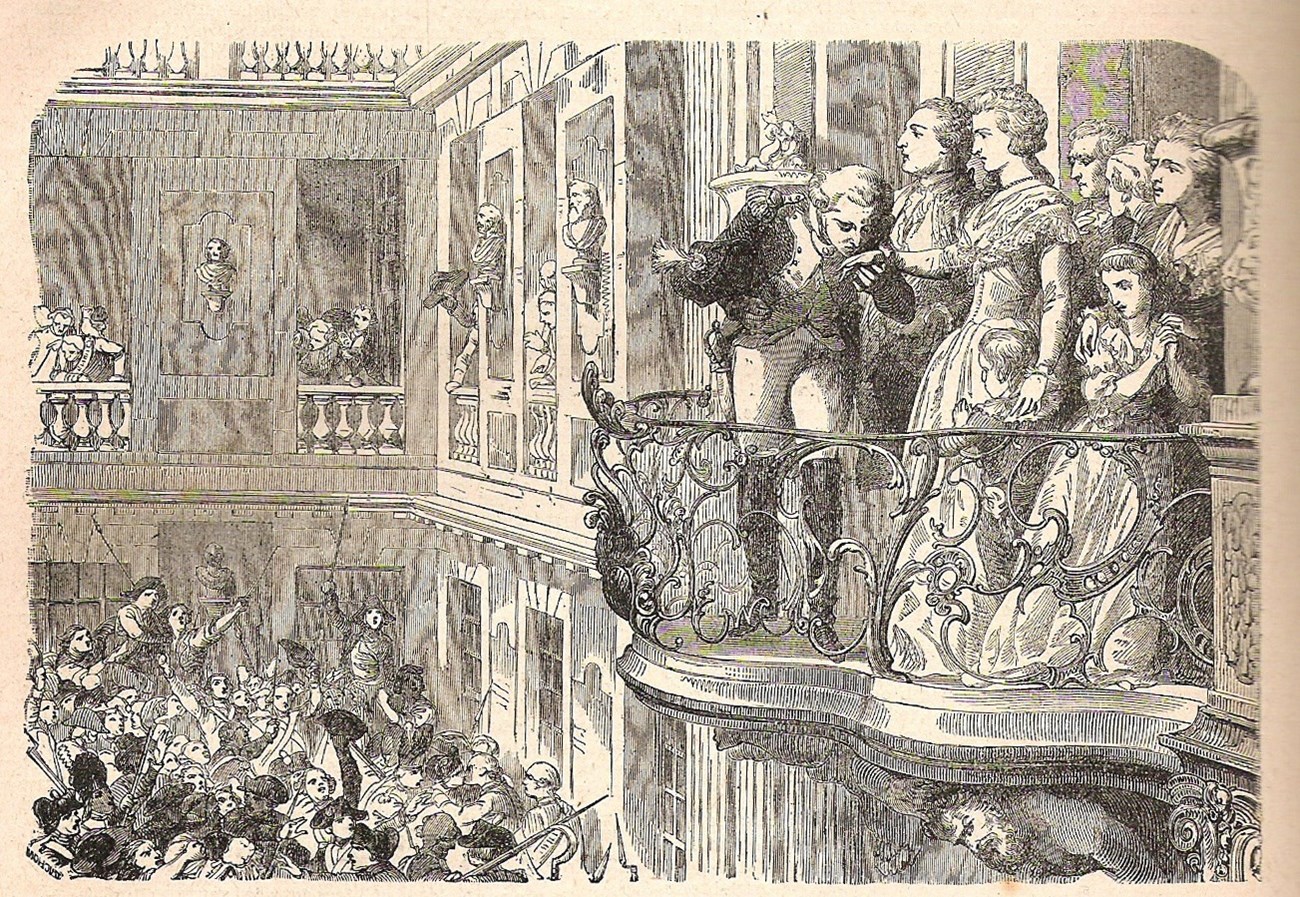
Engraving c. 18th century
“I believe that I am not mistaken in offering you my congratulations on the late events in France… With respect to the result itself, I think that every friend of rational liberty and of humanity must rejoice at the overthrow of the detestable tyranny under which you and a great part of Europe groaned, and in the hope that you have at last laid the foundations of institutions probably as free and liberal as you are susceptible of. My attachment to the form of government under which I was born and have ever lived never made me desirous that it should, by way of experiment, be applied to countries which might be better fitted for a limited monarchy. And if this be that which suits you best, I think the ancient dynasty in every respect preferable to a new one. Unfortunately, whilst the greater part of the civilized world rejoices at the restoration of a general peace, the United States remain alone at war, and are placed in a more critical situation than ever they were since the first years of their Revolution. Pride, avarice, and ambition will throw here great obstacles to an accommodation, for which there has ever been, on our part, the most sincere disposition. I write to you, well knowing your unalterable attachment for America, and that if in your power you will lend your assistance in promoting that result.”
- Gallatin to Lafayette, April 21, 1814.
Gallatin and Lafayette: A Friendship Amidst War
As Lafayette settled once again into his life on the outskirts of Paris, a new war was beginning to break out between America and Britain. Stemming from a mix of national insecurity, an American desire to annex Canada, and the continued British seizure of neutral American ships–– including their cargoes and their sailors––the War of 1812 grew hostile through a series of skirmishes that soured American sentiment towards Britain. Gallatin, at the time the Secretary of the Treasury under President Madison, had been appointed to travel to Russia to help de-escalate tensions with British negotiators. In one of his first correspondences with Lafayette, Gallatin took the opportunity to seek the Frenchman’s assistance given the difficult diplomatic position in which America had found itself. With the impressments of American soldiers continuing on the seas and the British refusing to meet the Americans to negotiate, Gallatin felt helpless as he awaited a breakthrough in this dispiriting stalemate. Hoping to engage Lafayette and persuade Emperor Alexander of Russia to facilitate the negotiation, Gallatin wrote cordially to Lafayette, congratulating him for Napoleon’s defeat and abdication of the throne and urging Lafayette to continue to promote the American cause abroad.
On May 25, 1814, Lafayette helped deliver a letter from the current Minister to France, William H. Crawford, directly to the Emperor at a gathering at the home of Madame Germain de Staël, a prominent figure of the French Revolution. The letter requested the Emperor be involved in ushering peace between the British and Americans. With Lafayette’s help, Emperor Alexander agreed to come to the aid of the stalled negotiations. Ultimately, after back-and-forth battles, British refusals to cooperate and ensuing sieges of land, American efforts to bring the British to the negotiation table resulted in the Treaty of Ghent, signed on December 24, 1814. Though the treaty didn’t address the main provisions which sparked the war in the first place, agreements written into the treaty such as the opening of the Great Lakes region to American expansion signaled a diplomatic victory. The effort on the part of both Gallatin and Lafayette to defend America from afar had paid off.
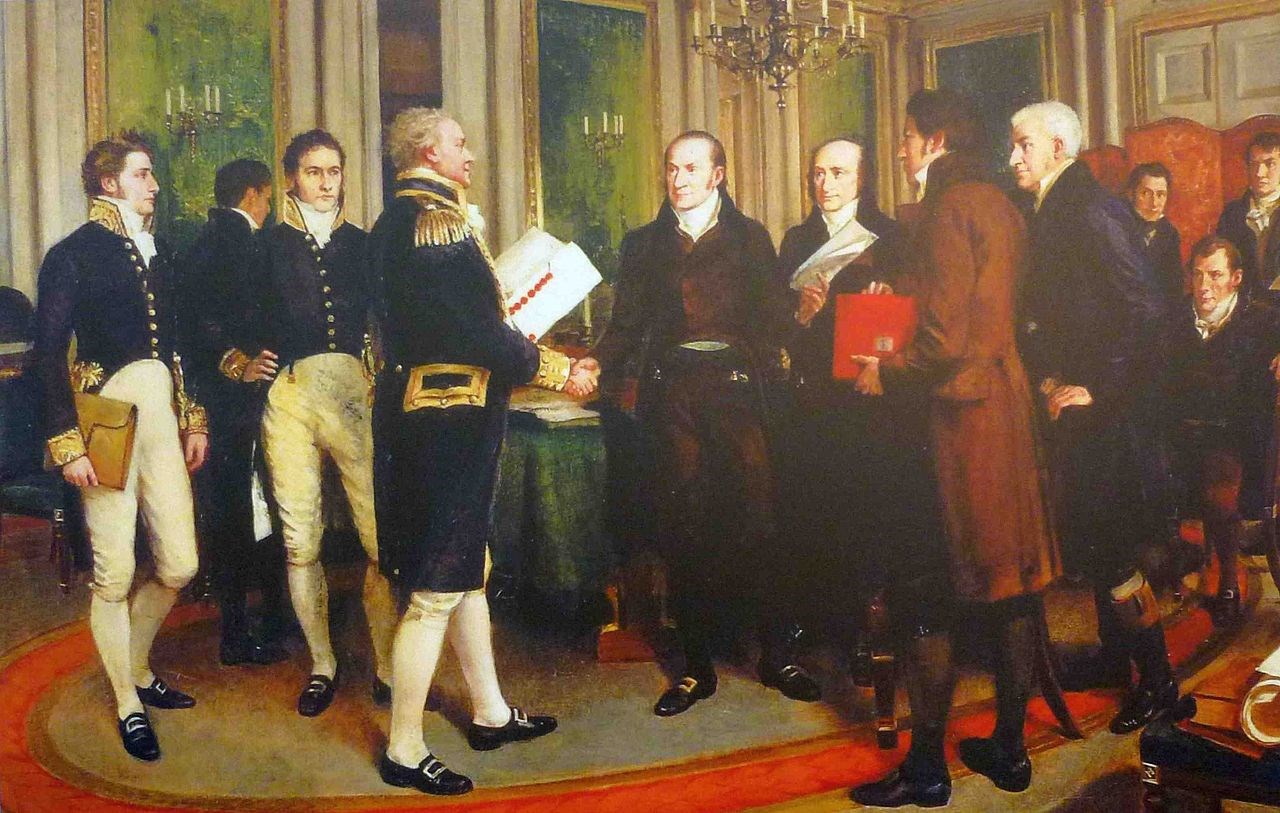
Painted by Sir Amedee Forestier, 1914
American Heroes in Paris
Following the War of 1812, Madison appointed Gallatin as the American Minister to France. Hesitant to accept the post because of Napoleon’s recent escape to Elba and the onset of the Bourbon Restoration, Gallatin was unsure how American interests could be protected and wondered if anything could be accomplished in France at all. After much consideration and urgence from Secretary of State James Monroe, Gallatin accepted the position, writing to former President Jefferson on April 1, 1816, “After what I had written to you you could hardly have expected that I would have accepted the French mission. It was again offered to me in so friendly a manner and from so friendly motives that I was induced to accept.” Jefferson responded that though the former President did not have acquaintances left in Paris, surely Lafayette would be a welcoming contact for Gallatin.
“You judge rightly that I have no acquaintances left in France: some were guillotined, some fled, some died, some are exiled, and I know of nobody left but La Fayette.”
- Jefferson to Gallatin, April 11, 1816.
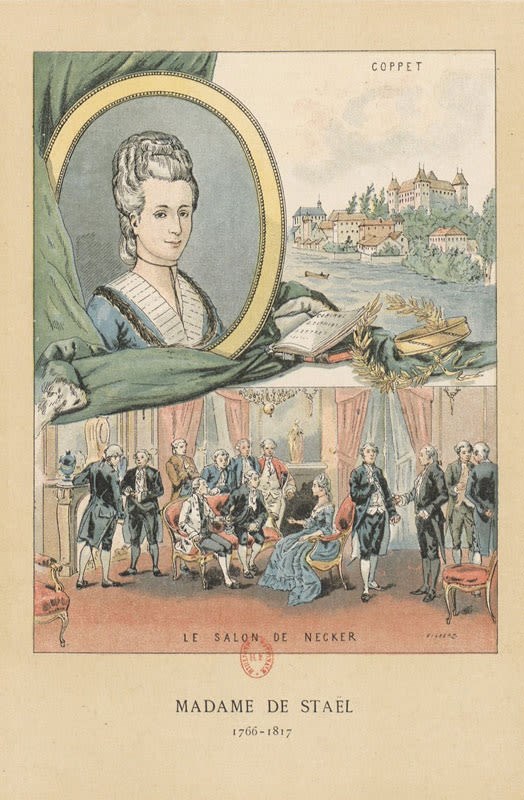
Elite life in Paris blossomed after the second abdication of Napoleon at Waterloo in 1815 and the subsequent restoration of the Bourbon King Louis XVIII to the throne. Lafayette’s homes in Paris and La Grange remained open to any American who wished to meet the war hero, and the Marquis played a vital role in helping Gallatin navigate the many social circles which Paris offered. Madame De Staël often hosted salons with prominent thinkers and champions of liberty such as famous naturalist and philosopher Alexander Von Humboldt (who encouraged Gallatin to cultivate his interest in Native American language and culture) and Russian diplomat Count Carlo Pozzo di Borgo, offering Gallatin access to liberal Republican circles. Though Lafayette generally stayed away from town because of his differences with the Bourbon government, he kept in touch and remained supportive of Gallatin’s attempts to promote American interests in France.
Gallatin and his family thrived in Paris. Gallatin’s well-respected lineage of Genevan aristocracy served him well as minister alongside his fluency in French. Able to communicate with noblemen and well-accustomed to the politesse necessary for upper-echelons of French society, Gallatin was well-received at French court. Because Gallatin retained his thick French accent late into his English-speaking life, the French King complemented Gallatin’s proficient French skills, lightheartedly adding, “but I think my English is better than yours.”
Gallatin spent his time as American Minister contributing his diplomatic skills to the negotiations of the Rush-Bagot Treaty and the Treaty of 1818 with the British. Though he had attempted to negotiate with the French for six years over claims of the American government for losses incurred during the Napoleonic years, Gallatin’s French counterparts remained apologetically indecisive and indirect. Concluding an exciting period in Europe, Gallatin and his family departed for America in 1823 after seven years away. As the family settled back into life in America and Gallatin considered entering back into politics, Lafayette continued to support secret revolutionary plots, meticulously avoiding arrest by the Bourbon government.
Lafayette’s Farewell Tour
In 1824, President Monroe and Congress invited Lafayette back to America to celebrate the nation’s upcoming 50th anniversary. As the generation of original founding fathers began to fade into history, this was an opportunity for the war hero to remind the American people of the progress they had made since independence from Britain. The visit was expected to be only a four-month visit to the original 13 states, but the tour endured a further 12 months as Lafayette traveled across all 24 states and met with old friends, many of whom he knew he would never see again. The hero prioritized a trip to Fayette County, a namesake of his, and was welcomed by the Gallatins at their home at Friendship Hill in May of 1825. Following a large welcome reception in nearby Uniontown, Lafayette found himself overwhelmed by an unexpected gathering of people on the front lawn of Friendship Hill, forcing the Gallatins to hospitably open their home. The small town was thrilled to have such a hero in their presence, but the interrupted time and the brevity of the visit seemed to disappoint both Gallatin and Lafayette. Nevertheless, the two friends warmly bid each other adieu, relishing in the last few moments together in person and unsure of whether they would get the same opportunity again.
From Outsiders to Infamy
Lafayette returned to France in 1827 and once again became active in politics, openly opposing press restrictions and censorship policies of new King Charles X. The “Hero of Two Worlds” led the revolution of 1830 at a spritely 70 years old, hoping to avoid civil war by offering the throne to the Duke of Orleans Louis-Phillippe II. The Marquis slowly retreated into retirement, but occasionally returned to public forums to voice his opinion on freedom of liberties under the new King.
The Gallatin family left Friendship Hill not long after Lafayette’s visit in 1825. Maintaining a characteristically active retirement, Gallatin became the head of the National Bank of New York at the age of 70. Passionate about public education and perhaps reflecting an early inspiration from his Enlightenment formation, Gallatin was elected president of a council which funded the creation of New York University. Inspired by Alexander von Humboldt’s encouragement so many years prior in Paris, Gallatin pursued his interest in Native American cultures and languages, later founding the American Ethnological Society in 1842.
Gallatin and Lafayette remained in contact as they began their years in active retirement. In his last correspondence with Lafayette, Gallatin provides him an estimated overview of the establishment of taxes and revenue in the U.S., no doubt for European review and for Lafayette’s own reference as France began to riot against Louis-Phillippe.
“I have neither paper nor time left… I have only room to convey to you and to your family the most affectionate remembrances of every member of mine. We are well. Frances has two children, James still but one, Albert still unmarried, my wife always enjoying excellent health. I am growing old and weak. So long as life remains I will be, with equal respect and sincere attachment, your old affectionate friend.”
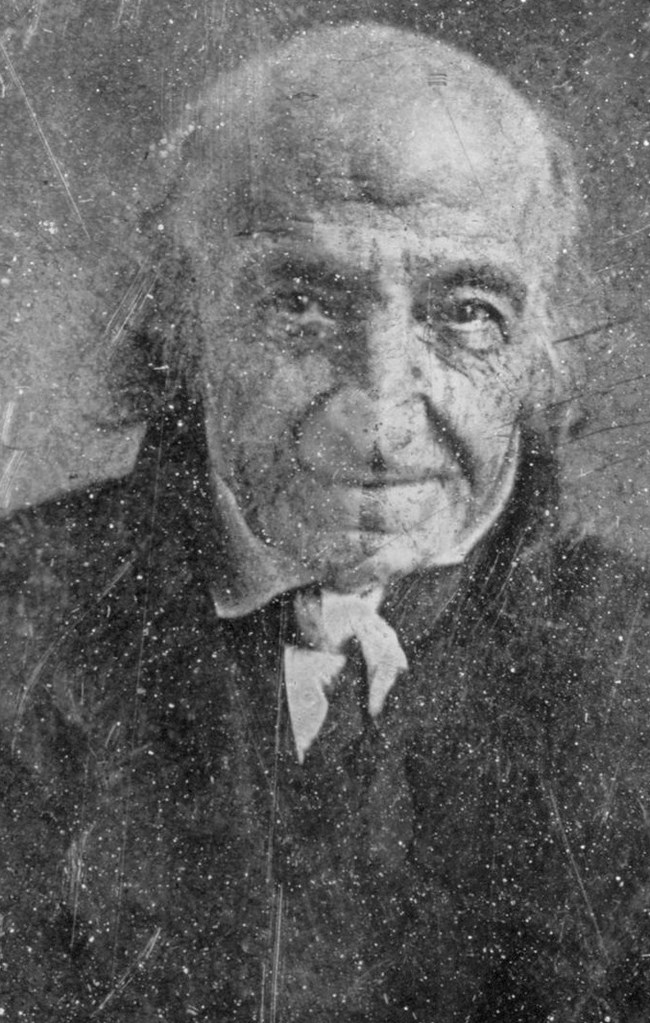
c. 1844-1849
Gallatin and Lafayette’s Lasting Impact
The following year, Lafayette succumbed to pneumonia and was buried next to his wife in Paris. His son, Georges Washington de Lafayette, sprinkled soil from Bunker Hill in his grave, forever marking Lafayette’s fond dedication to democracy in both France and America. Gallatin was the last surviving member of the Jefferson cabinet and the last surviving Senator from the 18th century prior to his own death in 1849.
These two European-born men passed into history as two figures who entered America as young outsiders and left the world as cherished historical figures. Equipped with knowledge of foreign culture, language, and a perspective formed by Enlightenment thinking, these two leaders used their experiences to achieve success in military, financial and diplomatic endeavors which promoted liberty and changed America for the better. Their friendship, forged in the midst of war, acted as a source of encouragement in each period of their lives that followed. From two orphaned young men departing for an uncertain future on American soil to long-lived heroes remembered for their dedication to freedom, liberty, and democracy, the lives of Gallatin and Lafayette illustrate the power which outside perspective and rich diversity may have on the trajectory of a nation.
Bibliography
Adams, Henry. “The Life of Albert Gallatin.” Internet Archive: New York Public Library, J.B. Lippincott & Co., 1879, archive.org/details/lifealbertgalla01adamgoog.
“Biography of the Marquis De Lafayette.” Ushistory.org, Independence Hall Association, www.ushistory.org/valleyforge/served/lafayette.html.
Clary, David A. Adopted Son: Washington, Lafayette, and the Friendship That Saved the Revolution. Bantam Books, 2008.
Dungan, Nicholas. Gallatin: America's Swiss Founding Father. New York University Press, 2010.
Gaines, James R. For Liberty and Glory: Washington, Lafayette, and Their Revolutions. W.W. Norton, 2009.
Gallatin, Albert. “The Writings of Albert Gallatin, 3 Vols.” Edited by Henry Adams, Online Library of Liberty, oll.libertyfund.org/title/adams-the-writings-of-albert-gallatin-3-vols.
May, Gregory. Jefferson's Treasure: How Albert Gallatin Saved the New Nation from Debt. Regnery History, 2018.
Murray, Meredith A. To Live and Die amongst the Monongahela Hills: the Story of Albert Gallatin and Friendship Hill. Eastern National, 1999.
“Washington & Lafayette.” Smithsonian.com, Smithsonian Institution, 1 Sept. 2007, www.smithsonianmag.com/history/washington-amp-lafayette-162245867/.
